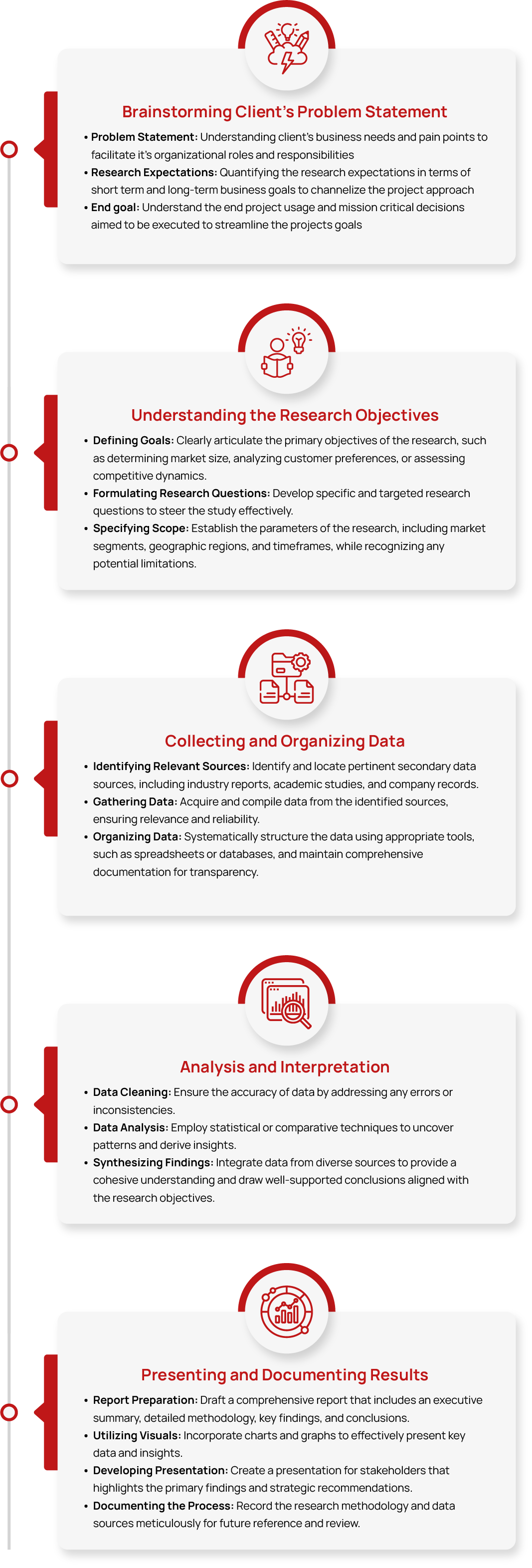Global Silicone Market Size, Share, Growth & Trend Analysis Report, 2032.
- Summary
- Market Landscape
- Methodology
- Table of Contents
Global Silicone Market Size, Share, Growth & Trend Analysis Report, By Product (Fluids, Gels, Resins, Elastomers), By End-use (Electronics, Transportation, Construction, Healthcare, Industrial Processes), By Region, and Segment Forecasts, 2024 – 2032.
Silicone is a synthetic polymer made up of silicon, oxygen, carbon, and hydrogen. It is known for its flexibility, heat resistance, water repellency, and durability. Silicones exist in various forms, including liquids, gels, rubbers, and resins, making them widely used in industries such as healthcare, electronics, construction, and cosmetics.
The Global Silicone Market was valued more than USD XX billion in 2024 and is projected to reach USD XX billion by 2032, growing at a Compound Annual Growth Rate (CAGR) of around 7% during the forecast period from 2025 to 2032.
Industry Trends
The global silicone industry is witnessing steady expansion, fueled by its growing use across diverse industries such as personal care, construction, consumer goods, and electronics. Innovation is a key trend, with manufacturers focusing on developing high-performance silicone products tailored for specific applications. Advanced formulations, such as high-temperature-resistant silicones and bio-based variants, are gaining traction, particularly in the automotive and healthcare sectors.
The rising adoption of silicone in electric vehicles (EVs) for insulation and thermal management, along with its increasing role in smart materials and sustainable solutions, is further shaping silicone market growth.
The demand for silicone is primarily driven by rapid urbanization, infrastructure expansion, and industrial advancements worldwide. The construction sector remains a major consumer due to silicone’s durability, water repellency, and resistance to extreme weather conditions. In addition, the electronics industry heavily relies on silicone for moisture-proofing circuit boards and enhancing semiconductor performance.
The healthcare sector is also boosting demand, with silicone playing a vital role in medical devices, prosthetics, and pharmaceuticals. Moreover, the increasing preference for eco-friendly and energy-efficient materials has encouraged the development of sustainable silicone solutions, further propelling the silicone market forward.
However, the silicone industry faces challenges such as market saturation in developed regions like the U.S., where growth opportunities are limited. The high cost of raw materials and energy-intensive production processes add to manufacturing expenses, making affordability a concern, especially in price-sensitive markets.
Supply chain disruptions, fluctuating silicone prices, and stringent environmental regulations regarding chemical emissions also pose hurdles. Additionally, competition from alternative materials, such as thermoplastics and bio-based polymers, may impact silicone’s dominance in certain applications. Despite these challenges, continuous research and technological advances are expected to sustain long-term market growth.
Industry Expert’s Opinion
- Sam Conzone, Ph.D., President and Chief Executive Officer, Momentive
"We are excited to fully bring Momentive into the broader KCC Corporation and anticipate a positive impact with the ownership change as we shift from a private equity mindset to a more strategic and long-term approach, we look forward to having KCC Corporation as our sole shareholder to support our growth through our people, technology, and innovation."
- Alastair Winn, President, Applied Silicone.
“Applied Silicone continues to deliver innovative material technology to the implantable device market; I believe our Dual Matrix gel possesses the right balance of softness and cohesive strength to outperform all other implantable silicone gels on the market.”
TT Consultants’ Perspective
The silicone market is growing steadily, driven by demand from construction, automotive, electronics, healthcare, and personal care industries. Known for its thermal stability, durability, and chemical resistance, silicone is widely used in sealants, adhesives, medical implants, and coatings. The market is evolving with eco-friendly innovations and energy-efficient manufacturing. Leading companies are expanding production, investing in R&D, and forming strategic partnerships to strengthen their global presence, while emerging applications in EVs and renewable energy continue to drive growth.
Market Segmentation
1. By Product (Fluids, Gels, Resins, Elastomers)
Silicone fluids are widely used in industrial applications due to their excellent thermal stability, water repellency, and lubricating properties. They are commonly used in personal care products, automotive lubricants, and defoaming agents in food processing and manufacturing.
Their non-toxic and non-reactive nature makes them ideal for applications requiring high-performance stability. Silicone gels are soft, flexible, and transparent materials used in personal care, medical applications, and electronics. They play a crucial role in scar treatment, wound healing, and encapsulation of sensitive electronic components like LEDs and solar panels.
Silicone resins are used in coatings, adhesives, and varnishes due to their high heat resistance, weatherability, and electrical insulation properties. They are widely applied in paints, construction materials, and insulation coatings for industrial equipment.
Their strong binding properties enhance durability, reducing maintenance costs in various applications. Silicone elastomers, including high-temperature vulcanizing (HTV) and liquid silicone rubber (LSR), are extensively used in automotive, healthcare, and consumer goods.
2. By End-Use (Electronics, Transportation, Construction, Healthcare)
The electronics sector relies on silicone for moisture-proofing circuit boards, protecting semiconductors, and improving insulation in electronic devices. It enhances durability and performance in components like printed circuit boards (PCBs), LED devices, and electronic control units (ECUs), making it a key material in advanced technology manufacturing.
Silicone plays a significant role in the automotive and aerospace industries due to its resistance to heat, chemicals, and weather conditions. It is used in spark plug coatings, airbags, adhesives, and lubricants, ensuring the safety and efficiency of vehicle components.
The construction industry extensively uses silicone in sealants, adhesives, and coatings due to its weather resistance, flexibility, and durability. It is applied in residential and commercial buildings, infrastructure projects like roads and bridges, and industrial units. Its ability to minimize earthquake damage makes it a preferred choice for structural safety.
Silicone is widely used in medical implants, prosthetics, and pharmaceutical applications due to its biocompatibility, non-toxicity, and flexibility. It is found in catheters, surgical tubing, and drug delivery systems, improving patient safety and comfort.
3. By Region (North America, Europe, Asia Pacific, Latin America, Middle East and Africa)
North America has a strong silicone market driven by demand in healthcare, electronics, and industrial applications. The U.S. is a key player due to its advanced manufacturing sector, although market saturation and high raw material costs pose challenges.
The growing demand for medical-grade silicone and eco-friendly materials supports continued market expansion. Europe is the second-largest silicone market, with increasing demand from the construction, renewable energy, and healthcare sectors. Countries like Germany, France, and the UK are investing in infrastructure projects and sustainable energy solutions, driving silicone consumption.
APAC dominates the global silicone market, accounting for the largest revenue share due to its vast manufacturing base, rapid urbanization, and rising demand across industries. China, India, and Japan are major contributors, with companies shifting production to the region due to lower labor costs and abundant raw materials. Expanding electronics and automotive industries further fuel growth.
The silicone market in Latin America is growing steadily, driven by increased construction activities, industrial development, and demand in healthcare applications. Countries like Brazil and Mexico are witnessing rising investments in infrastructure, leading to higher consumption of silicone-based materials in construction and industrial coatings. MEA’s silicone market is expanding due to investments in oil & gas, infrastructure, and renewable energy projects.
Competitive Scenario
The key competitors in the global Silicone Market are Elkay Chemicals Pvt. Ltd., Supreme Silicones, Shin-Etsu Chemical Co., Ltd., Silchem Inc., Silteq Ltd., Amul Polymers, Wacker Chemie AG, Specialty Silicone Products, Inc., Illinois Tool Works Inc., Evonik Industries AG, Hutchinson, Kemira Oyj, Dow Inc., Nano Tech Chemical Brothers Private Limited, and Elkem ASA among others.
Strategic Activities
- In February 2025, Dow Inc. announced a strategic review of its manufacturing site in Barry, South Wales, as part of a broader evaluation of its European assets. The review focuses on assessing alternative siloxane supply options to enhance competitiveness and better serve specialty silicone customers. While no immediate changes for employees, customers, or suppliers have been confirmed, the review has introduced uncertainty for the site's workforce of approximately 850 individuals.
- In May 2024, KCC Corporation finalized its acquisition of Momentive Performance Materials, a global leader in high-performance silicones and specialty solutions. This move aims to enhance KCC's position in the silicone market by integrating Momentive's advanced technologies and expanding its global footprint.
- In October 2024, Elkem introduced the AMSil™ 20503 series, a new generation of silicone elastomers specifically designed for additive manufacturing. These materials offer extended shelf life and improved productivity, catering to industries requiring durable and functional components produced through 3D printing technologies.
- In February 2024, Trelleborg announced an agreement to acquire Baron Group, an Australian Chinese manufacturer specializing in advanced precision silicone components. This acquisition is set to strengthen Trelleborg's position in the healthcare and medical sectors by expanding its capabilities in silicone-based solutions.

Please fill out the form to request the ToC and gain access to detailed insights in the report.
Request Table of Contents







